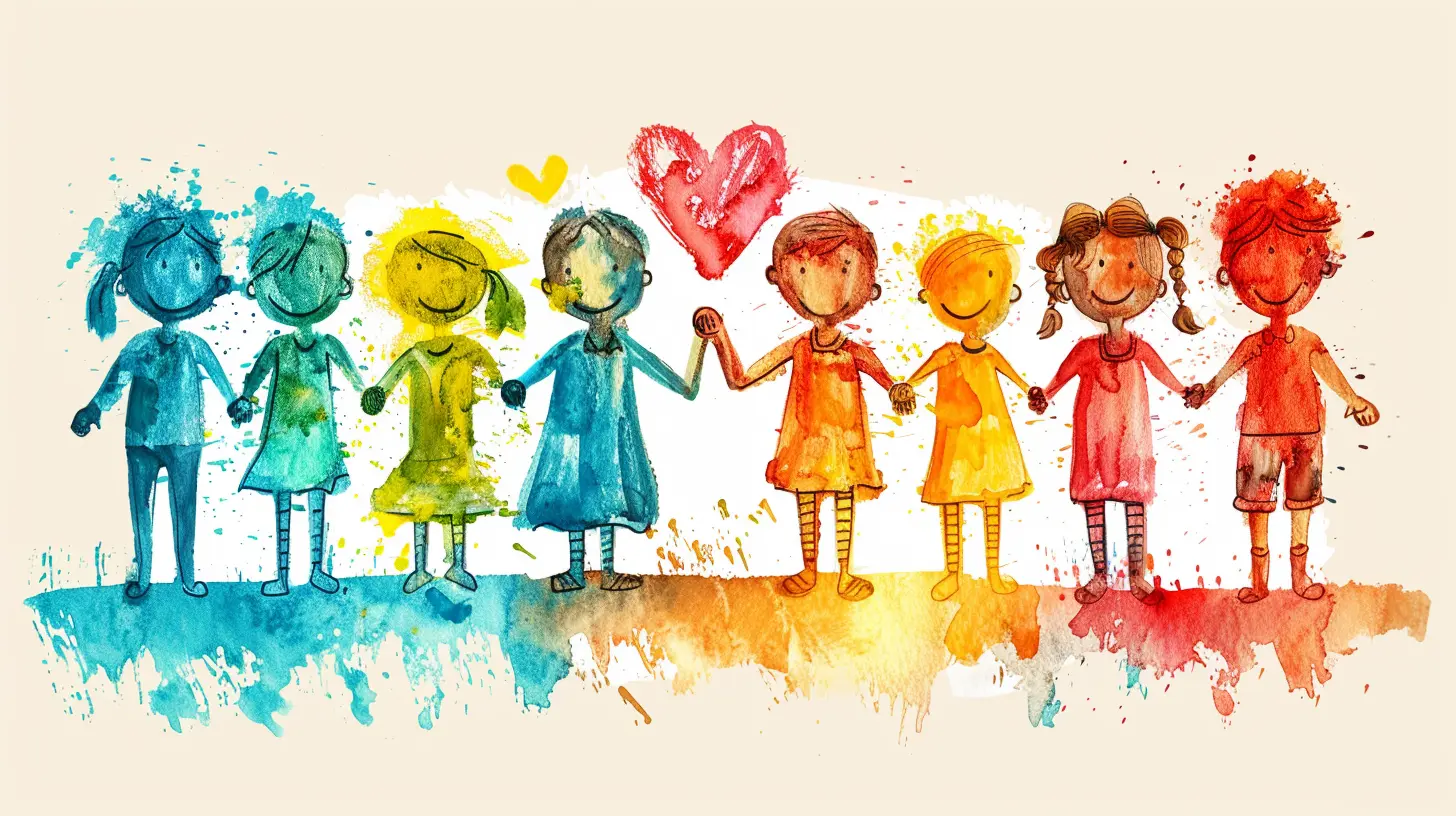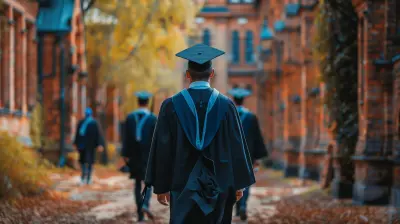The Role of Empathy in Effective Classroom Management
30 May 2025
Classroom management is often seen as a battle of wills—teachers versus students, a never-ending quest for order and discipline. But what if we’ve been looking at it all wrong? What if the secret to a well-run classroom isn’t stricter rules or harsher consequences, but something much simpler and more human? Enter empathy—the ability to step into someone else’s shoes and truly understand their feelings.
Sounds too soft for classroom management? Stick with me. Empathy isn’t about letting students run wild. It’s about creating a space where respect, understanding, and motivation thrive. And when that happens? Chaos turns into cooperation.
Let’s break it down and see how empathy is the real MVP of classroom management.

What Is Empathy, Really?
We talk about empathy a lot, but what does it actually mean in a classroom setting? It’s not just about feeling bad when a student is struggling—it’s about understanding their emotions and responding in a way that supports their growth.There are two main types of empathy:
1. Cognitive empathy – Understanding what a student is thinking or feeling.
2. Emotional empathy – Actually feeling what they feel on some level.
As a teacher, balancing both is key. You don’t have to cry when a student is frustrated, but you do need to recognize that frustration and respond in a way that helps, rather than dismisses, their experience.

Why Empathy Is a Game-Changer in the Classroom
Think about the best teachers you've ever had. Chances are, they weren’t the ones who ruled with an iron fist. They were the ones who made you feel seen, heard, and understood. That’s empathy in action.When teachers practice empathy, classrooms transform in three major ways:
1. Stronger Student-Teacher Relationships
Students aren’t robots—they crave connection and understanding. When a teacher shows empathy, students feel validated. They start seeing their teacher as someone who gets it, not just as the authority figure handing out assignments.And what happens when students feel understood? They’re more likely to listen, respect the rules, and engage in learning.
2. Better Behavior Management
A lot of misbehavior isn’t about defiance—it’s about unmet needs. A student acting out might be hungry, upset over something at home, or struggling with the material. Instead of immediately punishing them, an empathetic teacher digs deeper.This doesn’t mean letting bad behavior slide. It means responding in a way that addresses the why behind the behavior, rather than just shutting it down. And when students feel understood, they’re more likely to correct their actions on their own.
3. A More Positive Classroom Culture
Ever walked into a classroom that just feels good? It’s not about perfect silence or students sitting in perfect rows. It’s about an environment where students feel safe, supported, and willing to take risks.Empathy fosters that kind of space. When students know they won’t be embarrassed or judged for making mistakes, they engage more freely. They feel comfortable asking questions, making mistakes, and growing.

How to Bring More Empathy into Your Classroom
Alright, so empathy is important—but how do you actually do it? It’s not like there’s an “Empathy Switch” you can just turn on. But there are some simple, powerful ways to bring more empathy into daily teaching.1. Really Listen to Your Students
Listening isn’t just waiting for your turn to talk. It’s about actually paying attention and showing students that their words matter.Next time a student is upset or frustrated, try this:
- Make eye contact.
- Nod or repeat back what they’re saying to show you hear them.
- Avoid jumping to solutions right away—sometimes, they just want to be heard.
You’d be surprised how much of a difference this makes.
2. Use Empathetic Language
A minor tweak in wording can completely change how a student perceives a situation. Instead of saying, “Stop talking!”, try “I know you’re excited to share, but I need everyone’s attention right now.”It’s a small shift, but it acknowledges their emotions instead of just shutting them down.
3. Consider the Student’s Perspective
Before reacting to a student’s behavior, ask yourself: Why might they be acting this way?- Did they sleep poorly last night?
- Are they stressed about something?
- Do they feel embarrassed about not understanding the lesson?
Instead of just punishing misbehavior, get curious about it. That one mindset shift can change everything.
4. Model Empathy Daily
Students learn more from what we do than what we say. If you want them to be empathetic, show them how it’s done:- Admit when you’ve made a mistake.
- Apologize if you’ve been unfair.
- Show interest in their lives beyond the classroom.
When students see empathy in action, they’re more likely to adopt it themselves.
5. Give Students a Voice
Nothing kills engagement like feeling powerless. Give students choices, let them express their opinions, and involve them in decision-making when possible.When students feel like they have some control, they’re much more likely to cooperate rather than rebel.

The Science Behind Empathy and Student Success
If you’re thinking, “Okay, but does this actually work?”, the answer is a resounding yes. Research backs it up:- A study from the National Institute of Health found that students with empathetic teachers had higher engagement and academic success.
- Another study published in Frontiers in Psychology found that empathetic teaching reduces stress and anxiety in students, making learning easier.
So, no, empathy isn’t just a “nice-to-have.” It’s a must-have when it comes to helping students thrive.
But What About Tough Students?
Let’s be real—some students will test your patience daily. They’ll push boundaries, ignore instructions, and seem resistant to connection. Does empathy still work with them?Short answer: Yes, but it takes time.
Some students have built walls because of past negative experiences. They might not trust that an adult actually cares about them. Breaking through isn’t always instant—it’s a slow and steady process. Stay consistent, stay patient, and don’t take resistance personally.
Empathy Doesn’t Mean No Discipline
Here’s the thing—empathy doesn’t mean letting students walk all over you. It’s not about avoiding discipline, but using effective discipline.Instead of harsh punishments, opt for:
- Restorative conversations – Help students understand the impact of their actions.
- Logical consequences – Make sure discipline makes sense (forgetting homework = extra time to complete it, not missing recess).
- Positive reinforcement – Catch students doing things right and call it out.
You’re still holding students accountable—just in a way that teaches rather than punishes.
Final Thoughts
At its core, classroom management isn’t really about control. It’s about connection. Rules, procedures, and consequences all have their place, but without empathy, they fall flat.Students don’t just need discipline—they need understanding. They need teachers who see them as human beings with emotions, struggles, and aspirations. When that happens, everything changes.
So, the next time you’re dealing with a challenging classroom moment, take a breath and ask yourself, “How can I respond with empathy?” The answer might just be the key to a smoother, more successful teaching experience.
all images in this post were generated using AI tools
Category:
Classroom ManagementAuthor:

Eva Barker
Discussion
rate this article
3 comments
Eleanor Nelson
Great article! Emphasizing empathy in the classroom not only fosters a positive learning environment but also strengthens student-teacher relationships. Understanding students' perspectives can lead to better engagement and overall success. Keep spreading the importance of empathy!
June 19, 2025 at 12:29 PM

Eva Barker
Thank you for your thoughtful comment! I completely agree—empathy truly is key to enhancing both relationships and engagement in the classroom.
Astraea McEvoy
This article beautifully highlights the transformative power of empathy in classrooms. By fostering understanding and connection, educators can create a supportive environment that enhances learning and encourages positive behavior. Great insights!
June 5, 2025 at 12:49 PM

Eva Barker
Thank you for your kind words! I'm glad you found the insights on empathy's role in fostering supportive classroom environments impactful.
Carly McPhee
This article sheds light on a vital aspect of teaching! I'm curious about specific strategies educators use to cultivate empathy in their classrooms. How can we enhance this skill for better student engagement?
June 4, 2025 at 4:37 AM

Eva Barker
Thank you for your interest! Educators can cultivate empathy through role-playing activities, collaborative projects, and open discussions about feelings and perspectives. Incorporating literature that highlights diverse experiences also helps enhance this vital skill, leading to better student engagement.



